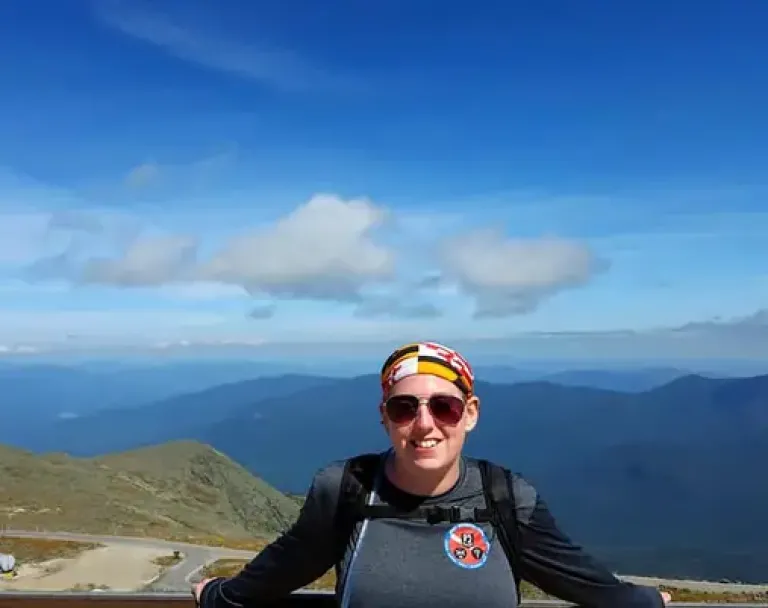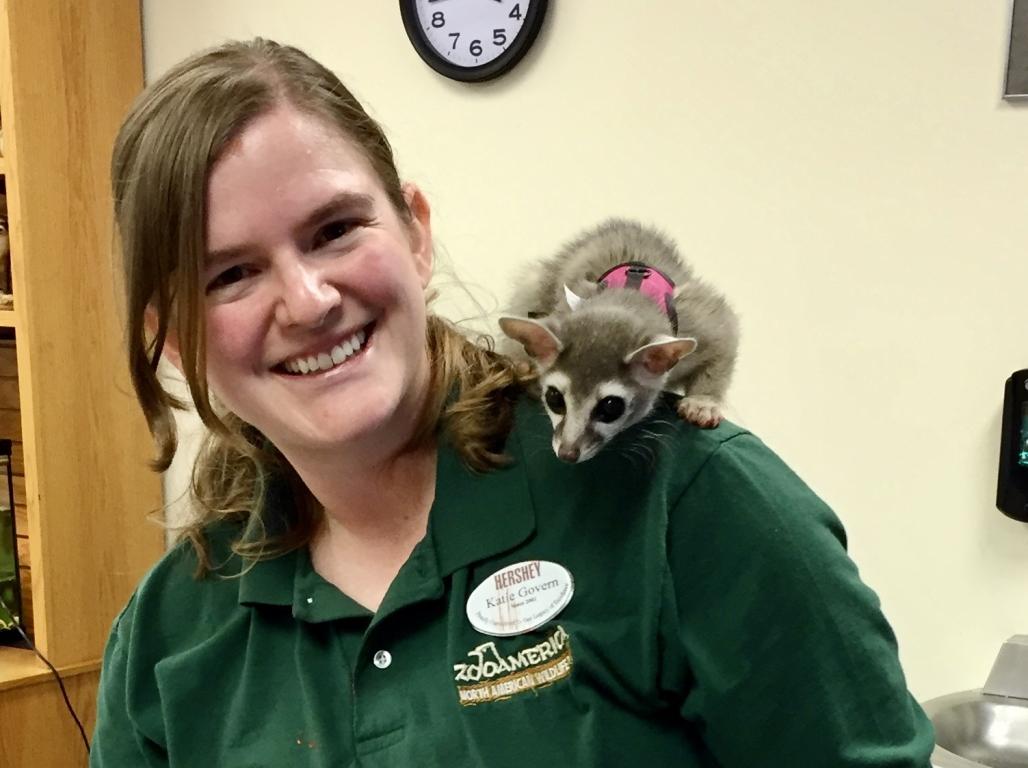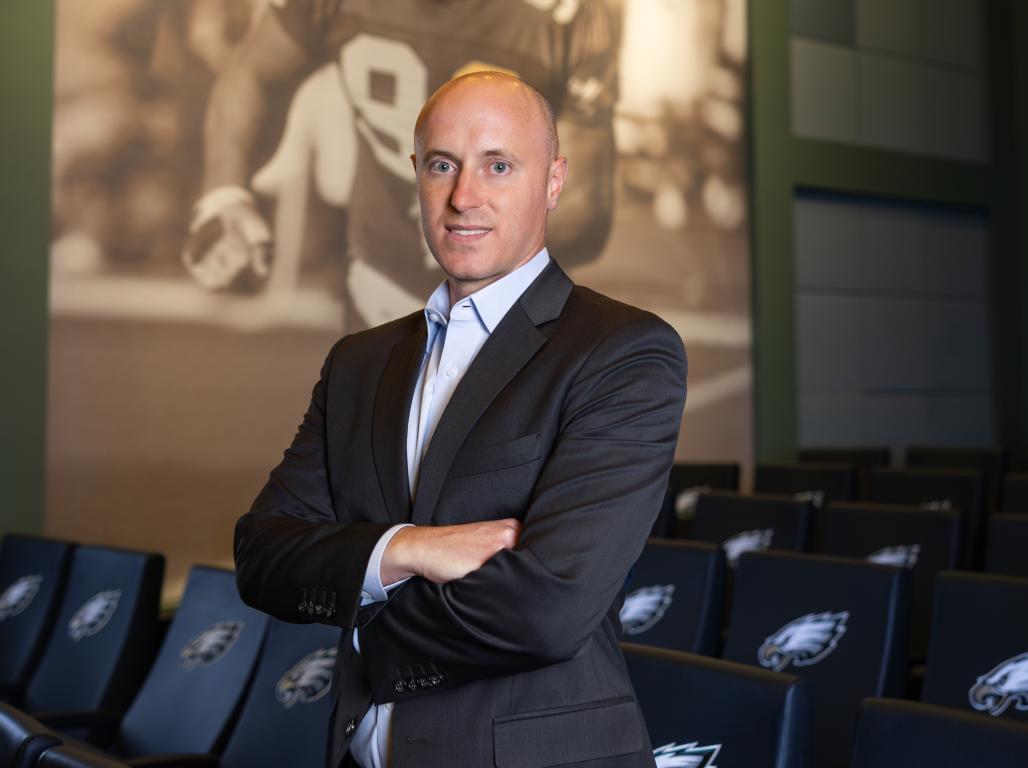
Like any good ‘90s kid, Stephanie Soder ‘14 learned about archaeology from The Mummy. She imagined herself traveling to faraway places like Evy, the film’s clumsy but brilliant Egyptologist, digging up long-lost secrets. But when she shared her dreams with teachers and peers, she got the same response countless other ‘90s kids got when they told their folks they wanted to be archaeologists: “That’s not a real job. There aren’t any jobs like that out there.”
“Well, that wasn’t true,” says Soder. “Because I am one now.”
Soder works as a research archaeologist for the Maryland Historical Trust, but it was an unexpected journey that brought her there. After graduating from Kennard-Dale High School in Fawn Grove, PA, Soder came to York College to study Criminal Justice. “It felt a bit more realistic at the time,” she says. “I wanted to help people, and I was always interested in the anthropology of crime—why people do the things they do.” Soder worked as a student officer and dispatcher for Campus Safety but didn’t quite feel the spark or sense of fulfillment she was looking for.
That all changed when she took an anthropology class during her junior year. “I ended up absolutely loving it,” she says, “and I began to pivot away from criminal justice.” In her remaining semesters as a York College student, Soder loaded her schedule with anthropology and archaeology classes. “Anything the College could offer, I took,” she says. She began taking diving classes as well, which eventually led to her traveling to Cambodia to participate in a scientific diving project as a student.
Studying Maritime Archaeology
She was hooked—on history and on travel. When she graduated and found herself unable to find interesting jobs in the criminal justice field, Soder decided to go all-in on her rediscovered passion and applied to study maritime archaeology at East Carolina University in Greenville, NC.
Getting in was no easy feat. Because she had graduated with a bachelor’s degree in Criminal Justice, Soder relied heavily on letters of recommendation from her York College professors. “I give them a lot of credit,” she says. “Archaeology is a small, niche thing, and I decided to go into the maritime program, which is even smaller. To see someone who has a criminal justice degree get a spot is rare. They wrote me wonderful letters, and I am so grateful to them.”
The field school for archaeology at East Carolina University provided Soder with ample opportunities to travel, and she took advantage whenever possible, following professors to places like Bermuda for fieldwork. “It’s no guarantee that you’ll get to travel in grad school, but I was very fortunate that all of our professors wanted to drag us along,” she says. During the summer of 2018, Soder traveled to Saipan, a U.S. Commonwealth in the Western Pacific, where Dr. Jennifer McKinnon, Soder’s thesis advisor, was running a field school. McKinnon encouraged her students to be curious about their own interests in their off-time. “She’d say, ‘Hey, we have a day off, go do your own research,’ ” says Soder.
Like many islands in the Pacific, Saipan saw its share of violent conflict during World War II, an event that has interested Soder since childhood, when she and her father shared a fascination with the period. Unlike her father, however, it wasn’t the big battles and the vast military campaigns that interested her but rather the often-overlooked events on the periphery. “I think it's fascinating,” she says. “So many people focus on the war aspects: the soldiers and their movements, the battle itself. But I kept thinking about the peripheral. Who's impacted by this? Who didn't get a voice? Who got stuck cleaning up the mess, and how were they impacted by that?” All of a sudden, Soder found herself in a position to explore these questions deeply. “I really wanted to make sure some of those voices were heard instead of continuously disregarded,” she says.
Senior Thesis Project: The Indigenous Experience
This fascination led to Soder’s thesis project, “‘The Japanese and U.S. Fought the War, We Ended up Paying the Price’: The Indigenous Experience on Saipan During World War II,” which recounts the experiences of the indigenous population in the wake of a 1944 battle between Japanese and U.S. forces that left the island and many indigenous families devastated. The project required close collaboration with the indigenous community, many of whom were less than enthusiastic about digging up a traumatic past.
“The community was so welcoming, but it wasn’t like everyone wanted to talk to me,” says Soder. “It was actually very difficult to get people to speak with us. There is still a stigma around talking about the war, and many don’t want to keep dredging up the past.” Soder found encouragement in the younger people she spoke with, many of whom longed to hear their elders’ stories. “I spoke to a lot of the younger generation over there, and they want to know, but they know talking about it means bringing up a lot of trauma,” she says.
Soder credits much of the project’s success and the willingness of the indigenous community to speak with her to her Chamorro translator, Fred. “He was awesome,” she says. “He was the one who went out and started talking to people to try to get them to talk to me. We did a radio show and made social media posts, but no one reached out to talk to us through those means. Fred did everything.” For Soder, it was an important lesson in community archaeology. “You often have to reach out through people the community already knows. You have to build that trust up. Fred was with me for every single interview unless people requested otherwise.”
These interactions with the indigenous communities on Saipan remain some of the most rewarding experiences of Soder’s career. She recalls an interview with a woman named Auntie Chailang, whose first language is Chamorro, the language of indigenous Mariana Islanders that borrows words from both French and Spanish. “She was struggling to think of the word she wanted, so she turned to Fred and said ‘bacalao,’ and I was able to translate it faster than Fred could. So I said to her, ‘Cod—codfish oil,’ and her face just lit up. Those moments of connection, where people invited me into their homes, were so rewarding,” she says.
This kind of work, which Soder and her colleagues call “conflict archaeology,” can have a strong emotional effect on both the researchers and the community, especially when the events being studied have touched the lives of people who are still living. “There were days when I was doing the oral histories that I would come home and just collapse,” she says. “It takes an emotional toll on you. For those working on ancient civilizations, it can be easier to separate yourself. You can be a bit withdrawn. The more recent you get, the more likely you will have that social aspect, that human element. There’s a push now to get various communities involved [in archaeology], especially with African American history and Indigenous Native American History, which is great. Any push toward community archaeology is great.”
Soder published her thesis in 2019.
Going to Work as an Archaeologist
After graduating from East University, she took a job in the Cultural Resources Management field working as an archaeological technician. There she performed survey work to make sure proposed construction projects would not impact archaeological sites. She then went to work for the Delaware State Preservation Office, making sure federal agencies were complying with preservation laws. “It was a nice overlap of my criminal justice and archaeology backgrounds,” she says. “But it was draining. I am not meant to sit behind a computer all day.”
In 2022, Soder accepted a position as a research archaeologist at the Maryland Historical Trust and settled in Cecil County along with her fiancé of ten years and their two rescue dogs. “I’m happy to be here,” she says. “It means I get to go out and play in the dirt again.” The job also affords Soder the chance to pursue some of her own research. “I’d really like to get back into the conflict archaeology side of things, but that can be difficult in Maryland. Not impossible, but difficult.” And though Soder hasn’t been diving since before COVID, she’s hoping that the underwater archaeology program in Maryland will afford her some opportunities to get back out on the water. “I think they’re gearing up for some survey work in May or June,” she says. “I’m hoping they’ll pull me out for some of that.”
Until then, Soder is still working on finding her “land legs.” Right now, the Maryland Historical Trust has a grant with the American Battlefield Protection Program, looking at local Revolutionary War sites like those of French General Rochambeau, whose armies had encampments in the Hartford and Cecil area. “It’s conflict archaeology, and it’s not about the battle, it’s about what happened on the periphery, which I like,” she says. “These encampment sites were short-term. The people were down and then back up the next day. Seeing all the archaeological material from that is what’s really scratching my itch right now. I’m excited for that one.”
Soder knows that her life right now would be completely surprising to her college-age self. “I think I’d be surprised that I settled down, that I managed to find someone to put up with me and my desire to travel,” she says. “I never would have thought this is where I’d be, that this is what I’d be doing, even when I was taking those anthropology classes. It just didn’t feel like this was an attainable thing. So, looking back, I think, ‘Wow, you made it.’ ”




